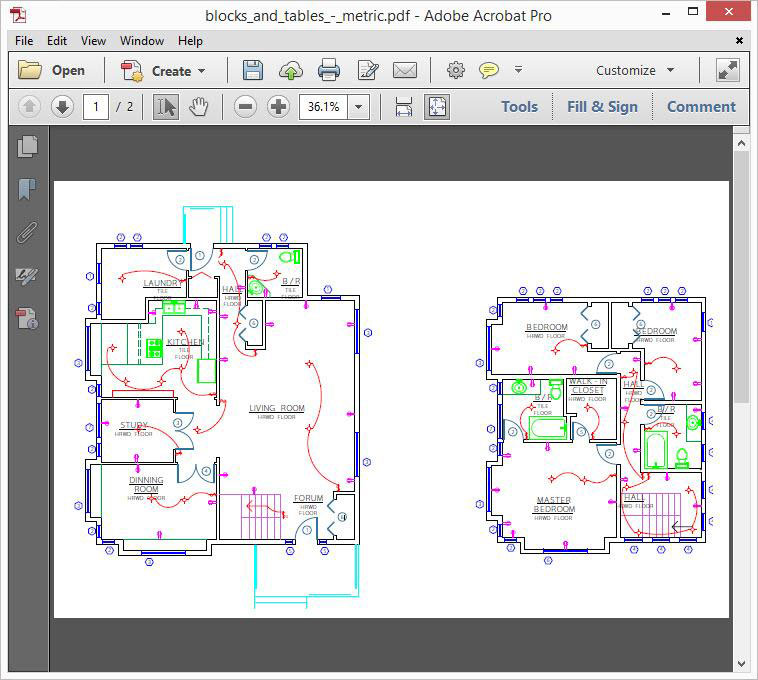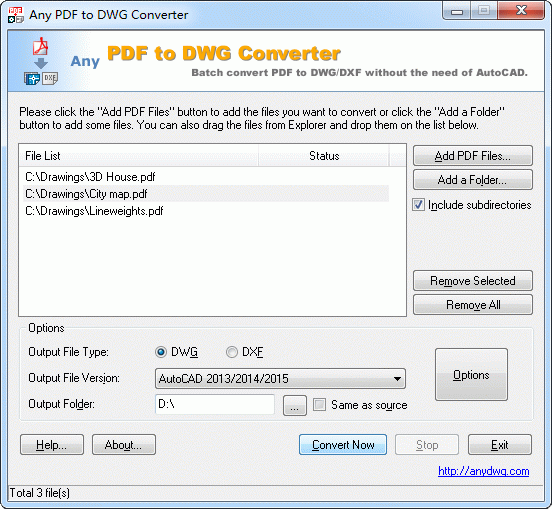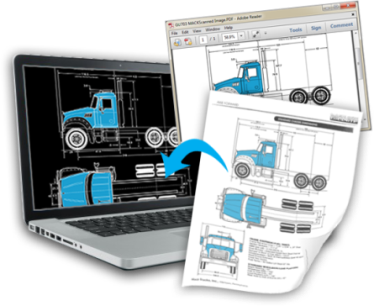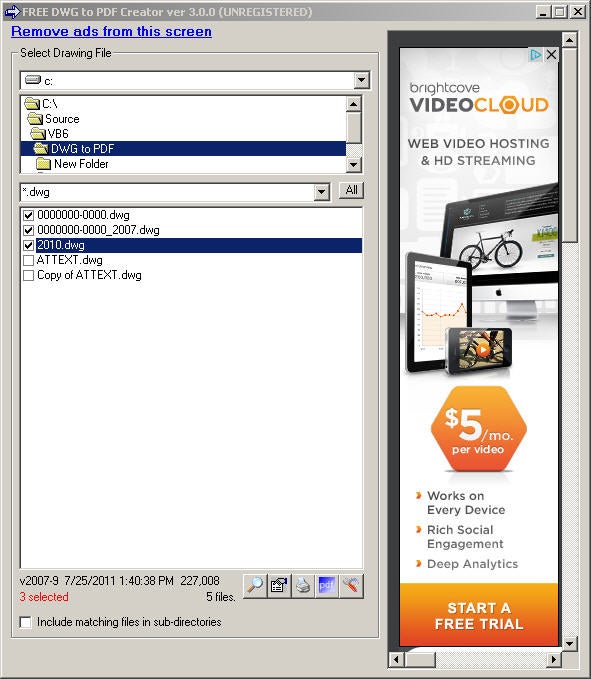- PDF to DWG - Convert file now View other document file formats Technical Details Each PDF file encapsulates a complete description of a 2D document (and, with the advent of Acrobat 3D, embedded 3D documents) that includes the text, fonts, images and 2D vector graphics that compose the document.
- DWG to PDFConverter Pro is a batch converter that allows you to convert DWG to PDF, DXF to PDF without the need of AutoCAD. Key Features: 1. Stand-alone utility - AutoCAD NOT required. Convert DWG and DXF to vector PDF in batches.
- The best PDF to Word converter on the market. Easily and accurately convert PDFs from anywhere on your device. You can even convert PDFs from Dropbox, Google Drive, iCloud, Gmail, Box, and OneDrive into editable Microsoft Word documents. Simple to use app and powerful converting engines.
- Convert CAD(including.dwg and.dxf, the following is the same as here.) to PDF, and the user can adjust the effect of the conversion as needed. For example, transform the specified layout, set the page size, transform the specified area, and adjust the line weight.
DWG to PDF Converter for Mac OS X, download best alternative solutions carefully chosen by our editors and user community. DWG to PDF Converter for Mac: download free alternatives OTHER PROJECTS.
The PDF file format is an industry-standard in most modern offices and studios and this is especially true for professionals in the manufacturing, design, and construction industries. The same goes for the DWG format which is widely used on a global scale. We’ve discussed in many previous articles how easy it is to convert PDF to DWG using our software Scan2CAD, but it’s historically always been a bit more complicated for macOS users to navigate the ins and outs of CAD software compared to their PC counterparts. Fortunately, Scan2CAD not only has a fully-functioning PC version; the software is also usable on macOS.
For Mac users, converting their PDF to DWG gives them the freedom to edit their designs in any standard CAD and modeling program, including AutoCAD. We’ll be taking a look exactly how to use Scan2CAD to convert your files with step-by-step instructions.

What is a PDF file?
Adobe’s PDF file format Source
The Portable Document Format, or PDF as most of us know it, is a widely-used file format around the globe. It is convenient for its cross-platform accessibility, its compactness, and its no-fuss digital documentation. PDF can store both vector and raster elements, making it ideal for CAD users and designers. The format can be opened by Adobe Reader – which already comes pre-installed in Macs – or even just any of the standard web browsers.
Small file sizes, read-only functionality, and password protection make PDFs ideal for sending design updates to clients or collaborators. Users can also add comments and highlights within the PDF format, which is even better for quick and easy back-and-forths between all parties involved in the project.
What is a DWG file?

The DWG file format is the main file format of AutoCAD, the design and construction industry’s most popular CAD software. The use of DWG is prolific in fact that any and all modern CAD software can open it and edit it in some capacity. The format was created back in 1982 and was a proprietary file format owned by Autodesk.
DWG supports all standard vector entities including AutoCAD specific elements such as dynamic blocks. And due to its binary makeup, the DWG file format is more often than not smaller than other CAD formats like DXF.
How does the conversion process work?
We’ve mentioned how the PDF’s read-only format is useful for sharing documents, but it starts to become a bit of a problem when designers and drafters need to use PDFs as references for new DWG files they have to create. This gets even more complicated what PDF files have raster elements which, by their very nature, are difficult to edit and reproduce.
Luckily, Scan2CAD is readily able to convert both raster and vector PDF elements into the DWG format, readily workable with most CAD software available on Macs. Alternatively, users can also go about converting PDFs manually by tracing over them. Let’s go into detail on the pros and cons of both processes:
Manual tracing
Manually tracing over a PDF involves a lot of time and effort. Simply, this process is just tracing over every line and vector element in the PDF to recreate the drawing elements in the document.
Although quite tedious, it has the added benefit of the meticulous attention of human drafters. Just like how Captcha’s are meant to confuse bots and serves as a filter to determine if the user is human, automatic tracing software will have a hard time deciphering faded lines, hand-written text, and drawing elements that overlap each other. When it comes to accuracy and understanding, nothing beats good, old-fashioned human work.
Do note that for most drawings, this is a long, tedious process and can get tiring really quick especially with more complex PDFs or if there are batches of drawings that need to be converted. So only consider manual tracing when time and energy are both on your side.
Convert Multiple Dwg To Pdf
Automatic tracing

Pdf To Dwg Converter Mac Free Online
Automatic tracing of PDFs includes the use of raster-to-vector conversion software such as Scan2CAD. The software detects the lines and edges of raster pixels and converts them into corresponding vector lines, beziers, arcs, and circles. For PDF files that are already vector, conversion software will let users save these PDF files as workable DWG files, ready to be used on any of the standard macOS CAD software.
The process is quick and accurate. The more advanced conversion programs, Scan2CAD included, also have OCR functionality, meaning they can identify any raster text in the PDFs and convert them into editable TrueType text.

Automatic tracing programs will sometimes have a harder time converting PDFs if the quality of the raster elements is too low or too blurry or if the document was hand-made. In these cases, it’s a simple matter of converting the PDF, flaws and all, and editing the output in your preferred CAD software.
For most cases, even when the conversion isn’t perfect, automatic tracing will take much less time to do than manual. So this method is perfect for users who are running to meet a deadline or those that simply don’t have the patience for manual tracing.

How to convert PDF to DWG with Scan2CAD
The Scan2CAD interface
For PDF files that already have vector information in them, it’s all a matter of opening up the file on Scan2CAD and then saving the vector information as a DWG file.
If you’re working with raster information in the PDF, however, there are a few extra steps:
- Take the PDF file that you want to convert into DWG and load it up on Scan2CAD.
- With raster images that are a bit less clean than we want for conversion, a crucial step in the process is the cleanup. Click on the ‘Clean image’ button at the top-left corner of the screen and play with the settings until you have a preview image that you’re happy with. Be sure to turn the image monochromatic if it isn’t already and make sure to get rid of any unwanted marks to avoid any unnecessary conversion clutter.
- After the cleanup is the actual conversion process. We have a bunch of tutorials on how to tweak the settings of the conversion to get exactly what you want as an output, but in general, the default settings are already a pretty good estimate. If you’re looking to work with the PDf on CAD, you’ll most likely want to go for the ‘Technical’ Vectorization Method and ticking ‘Vectorize and OCR’ to convert the text elements in the image as well.
- Click on ‘Run’ to see a preview of the conversion. If you’re happy with what you see, click on ‘OK’ to execute the conversion process.
- Once you’re satisfied with the results, just save the newly converted vector file as a DWG file and you’re done.
Why Scan2CAD?
Unlike most ‘free’ online conversion services, Scan2CAD promises quick, efficient file conversions without the need to run the risk of emailing your private proprietary drawings to unknown third-parties. Scan2CAD is at the front of the pack when it comes to conversion technology and has no problem converting most technical drawings such as architectural schematics, engineering diagrams, and site plans.
The software comes with basic raster and vector editing tools, so you can fine-tune the output of the conversion process if you wish. The program’s state-of-the-art OCR functionality can also seamlessly convert any raster text into editable TrueType, saving you the hassle of re-typing the text in your raster PDF documents.
Scan2CAD supports a wide array of file formats and can output vector files in the industry-standard DWG, DXF, and G-Code formats. Scan2CAD also offers 24/7 customer support and flexible licensing and subscription packages.
If you’re still unsure about the software, we offer a 14-day free trial version that has all the features of the Pro version of Scan2CAD. Try it out today.